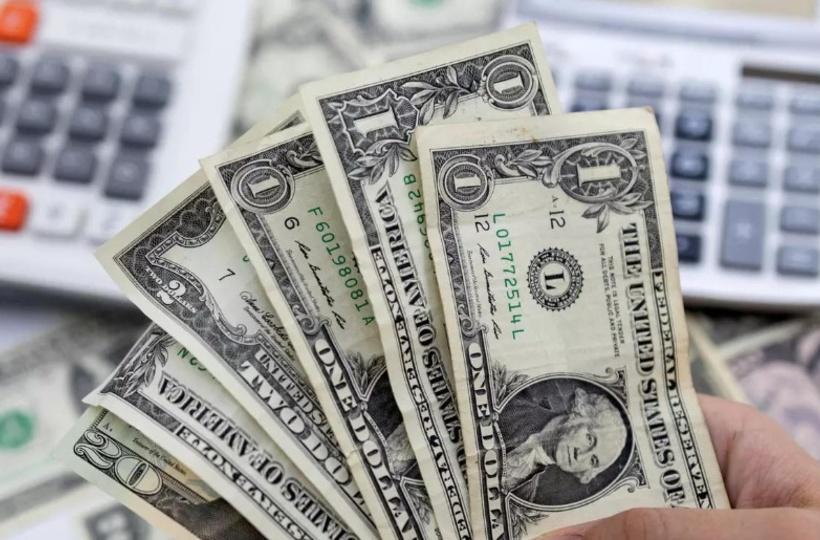Laying the Foundation for Financial Stability
India’s journey towards building its forex reserves began in the post-independence era. As a newly independent nation, the country faced severe economic challenges and a chronic shortage of foreign exchange. The government understood the critical role of foreign exchange reserves in stabilizing the economy, enabling trade, and promoting economic growth. Through prudent policies and strategic interventions, India gradually accumulated foreign exchange reserves, laying the foundation for financial stability and future economic prosperity.

Image: currentaffairs.adda247.com
Defining Forex Reserves: Their Significance and Impact
Forex reserves refer to the stock of foreign currency and other liquid international assets held by a nation’s central bank or monetary authority. These reserves play a pivotal role in maintaining macroeconomic stability, facilitating international trade, and managing exchange rate volatility. They act as a buffer against external economic shocks, such as sudden changes in capital flows or currency fluctuations. By holding forex reserves, nations can also influence their exchange rate policies and support the value of their domestic currency.
India’s Early Forex Reserves: A Historical Perspective
In the early years of independence, India’s forex reserves were meager. As a result, the country faced severe import restrictions and foreign currency shortages that hampered economic growth. To address these challenges, the government implemented a system of import controls and exchange rate regulations. India’s first five-year plan, launched in 1951, emphasized the importance of building up forex reserves through export promotion and import substitution.
During the 1960s, India experienced a period of accelerated economic growth and foreign investment. This led to a gradual increase in forex reserves. However, the reservas were still insufficient to meet the country’s growing import needs and external debt obligations. In the early 1970s, India faced severe economic challenges, including a sharp increase in oil prices and a global recession. These factors put a strain on the country’s forex reserves, forcing the government to devalue the rupee and seek international assistance.
Prudent Management: Stabilizing the Indian Economy
To overcome these challenges, India adopted a series of policies that helped stabilize the forex reserves. These measures included stricter import controls, increased export incentives, and a more flexible exchange rate policy. Additionally, the government embarked on a program to increase foreign direct investment and promote capital inflows.
As a result of these prudent management policies, India’s forex reserves gradually recovered and grew steadily. By the end of the 1980s, India had built up a comfortable level of forex reserves, providing a solid foundation for economic stability. The country’s forex reserves have continued to grow in the последующие decades, providing a buffer against external economic shocks and contributing to the country’s economic growth.

Image: www.youtube.com
Latest Trends and Developments: How India Manages Its Reserves
In recent years, India’s forex reserves have crossed the $600 billion mark. The country’s central bank, the Reserve Bank of India (RBI), actively manages the forex reserves, using a combination of market interventions and investments to stabilize the exchange rate and meet the country’s external obligations. The RBI invests a portion of the forex reserves in low-risk assets, such as U.S. Treasury bonds, to earn returns.
The RBI also intervenes in the forex market to prevent excessive volatility in the exchange rate. By buying or selling foreign currency, the RBI can influence the value of the rupee. This helps to maintain the competitiveness of Indian exports and mitigate the impact of external economic factors on the domestic economy.
Tips and Expert Advice: Strategies for Managing Forex Reserves
Based on India’s experience and the insights of economic experts, here are some tips for effectively managing forex reserves:
- Maintain a prudent level of reserves: Avoid holding excessive forex reserves that could lead to opportunity costs or expose the country to exchange rate risks.
- Diversify the composition of reserves: Hold reserves in different currencies and assets to reduce the impact of exchange rate fluctuations and geopolitical risks.
- Market interventions should be judicious: Use foreign exchange market interventions to stabilize the exchange rate, but avoid excessive intervention that could distort market dynamics.
- Invest reserves wisely: Invest a portion of the forex reserves in low-risk, income-generating assets to enhance returns.
FAQs: Common Questions about India’s Forex Reserves
Q: What is the significance of forex reserves?
A: Forex reserves are critical for economic stability, facilitating international trade, and managing exchange rate volatility.
Q: How does India manage its forex reserves?
A: The Reserve Bank of India uses a combination of market interventions and investments to manage the forex reserves.
Q: What are the benefits of investing forex reserves?
A: Investing forex reserves can generate returns and diversify the risks associated with holding foreign currency.
Early Forex Reserves Of India
Conclusion: India’s Forex Reserves as a Cornerstone of Economic Growth
India’s forex reserves have come a long way since the early days of independence. Through a journey marked by prudent policies, sound management, and continuous adaptation, India has built up a substantial stock of forex reserves that serves as a cornerstone of its economic growth and financial stability. As India continues to navigate the evolving global economic landscape, its forex reserves will play a vital role in ensuring economic resilience and enabling the country to seize new opportunities for prosperity. Are you interested in learning more about the fascinating world of foreign exchange reserves and their impact on India’s economic trajectory?






